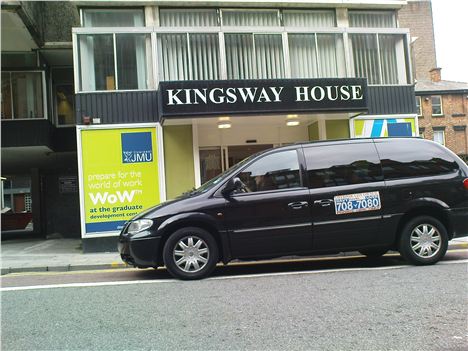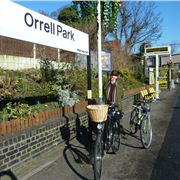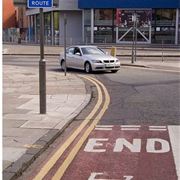HOW do you take your trips in Liverpool?
No, not the sort of trips that keep compo-claim lawyers in foreign holidays, but the ones that get you from A to B.
Liverpool City Council wants to know - and just days after it announced it is abolishing the bus lanes has announced that it wants one in 10 of all trips to be made by bike by 2015.
Record numbers of people are now feeling the brisk Mersey wind in their hair as they pedal up and down the streets of Liverpool – almost 20 per cent up on 2009.
But with household ownership of a bike (and a car) among the lowest in the country, a new transport strategy aims to change all that – turning Liverpool into a city where cycling is a normal choice of travel.
 Clearly defined routes: The strategy may also include
Clearly defined routes: The strategy may also include
educating other road users
Here are the stats: A regular cyclist has the fitness of those 10 years younger and lives two years longer, yet in Liverpool, only 18 per cent of adults are active enough to benefit their health and nearly one in four boys and one in three girls in Year 5 (aged 10-11) in Liverpool are overweight.
According to Mayor Joe Anderson, the “Cycling Strategy for 2013-2026” could help save over £1 million in reducing premature deaths and NHS costs, as well as delivering over £2 million of benefits in congestion and pollution reduction.
People are now being invited to share their views, and let the council know whether they ride a bike already or would like to ride a bike in the future.
The council says its ambitions will be boosted by the (postponed) launch, early next year, of its 24/7 Cycle Hire Scheme - the biggest in the UK, outside London.
 Cycling is being
Cycling is being
promoted in north LiverpoolIt is still in discussions with a number of operators to get it up and running – although a similar scheme, Bike & Go, already operates from 17 Merseyrail stations.
Until 2014, Liverpool has £1m from the Department of Transport to get cycling infrastructure and sustainable transport further down the road. It says it is being invested in, among other projects, improving east/west links, setting up a neighbourhood travel team and the promotion of cycling to businesses and communities in north Liverpool.
Other on-going work includes a £300,000 investment, from the Government’s Cycle Safety Fund, in major improvements to the area around the entrance to Princes Park, which is heavily used by cyclists for commuting. Meanwhile, work to improve cycle links on Leeds Street in the city centre is under way.
Liverpool City Council’s Cabinet Member for Transport and Climate Change, Councillor Tim Moore, said: “This is a really important plan.
“We know that many of the most attractive, vibrant, successful and liveable cities of the world have high levels of cycling and we recognise its importance to creating a sustainable society.”
Public consultation runs until 28 October. If you would like to have your say, visit this.
Uphill struggle or a breeze all the way? The cycling strategy's key aims
Today's proposals are welcome news but will they be radical enough to entice a potential cycling population - or alter the behaviour of other road users?
Liverpool is identified in the strategy as a city with "reasonable terrain", which many of the less fit - the people the plans are aimed at - might initially dispute.

But notwithstanding that, there have been criticisms from the public (on other related stories on Liverpool Confidential) that the number of cycling lanes in meaningful arteries around the city remains dangerously poor.
Conversely, they say, there are few places to actually ride a bike in the city centre: its pedestrianised layout making a freewheeling trip to the shops liable to land you a police fine.
On the upside, Liverpool has the lowest rate of bike thefts in UK cities.
So will cycling become a viable transport alternative in Liverpool, or not go beyond the level of a whizz around the park at the weekend?
Here are the key points of the strategy
a) Developing a safer cycling environment through the continuing investment in the city’s cycle network, with clearly defined routes and good quality facilities.















